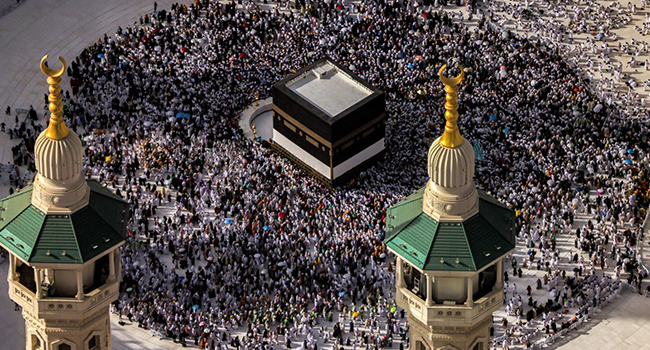Saudi Arabia has announced a major new project flanking Mecca’s Grand Mosque, providing 900,000 extra praying spaces together with residential and hospitality services for the millions of pilgrims who visit each year.
King Salman’s Gate, which includes several high-rises next to Islam’s holiest site, is an “integrated mixed-use destination” blending Mecca’s “rich architectural heritage with world-class modern living”, the official Saudi Press Agency said on Wednesday.
The project, covering 12 million square metres (about 3,000 acres), and featuring indoor and outdoor praying spaces, joins a list of major developments intended to transform the economy of the world’s biggest oil exporter.
READ ALSO: Saudi Arabias Sleeping Prince Dies After 20 Years In Coma
Saudi authorities are also spending billions of dollars on the Masar project, which includes at least 40,000 new hotel rooms for Mecca, towards which Muslims around the world pray each day.
The ‘King Salman Gate’ project is expected to create 300,000 jobs by 2036 with a seamless connection to public transport while also preserving Makkah’s rich heritage and enhancing the experience of the Guests of Allah.
NEWS: Crown Prince Mohammed bin Salman launches the “King Salman Gate” Project, a landmark multi-use destination beside the Grand Mosque in Makkah.
Covering 12 million m², it will feature residential, cultural & service facilities, accommodate 900,000 worshippers, and create… pic.twitter.com/BiAXbSFrBb
— Inside the Haramain (@insharifain) October 15, 2025
Worshippers visit Mecca year-round, but arrivals peak for the annual hajj pilgrimage, which drew 1.6 million people in June. Revenues from pilgrimages were officially estimated at around $12 billion in 2019.
Increasing the number of pilgrims is a key component of the Vision 2030 project of Crown Prince Mohammed bin Salman, Saudi Arabia’s de facto ruler, which aims to diversify the economy and reduce its reliance on oil.
The new project was announced just months after the completion of a Grand Mosque expansion that raised its capacity to two million worshippers and extended surrounding courtyards.





